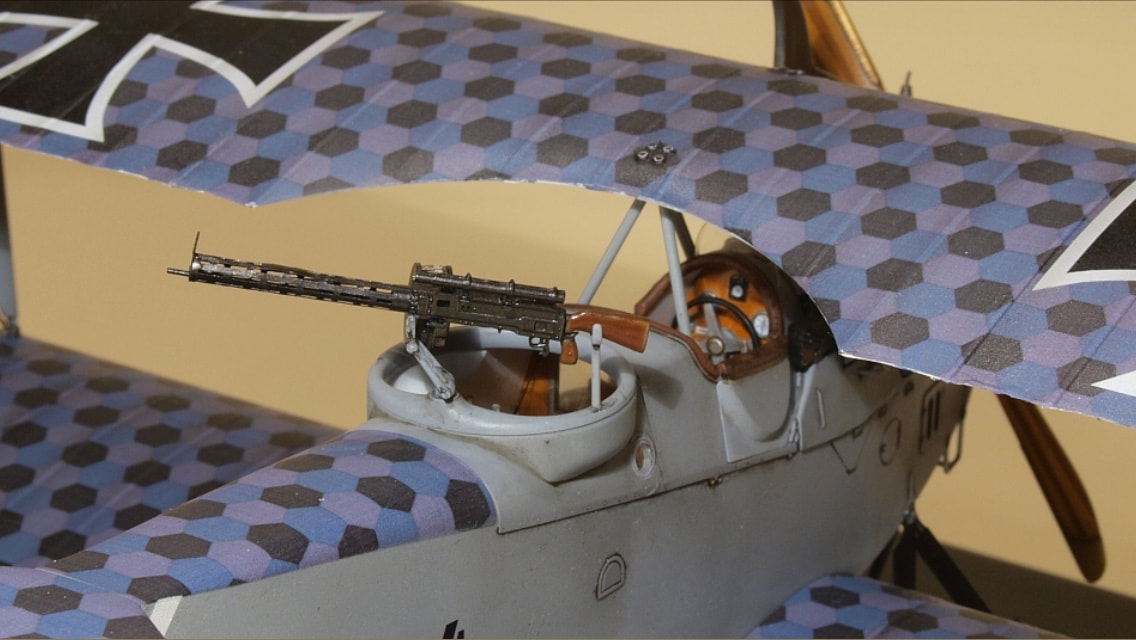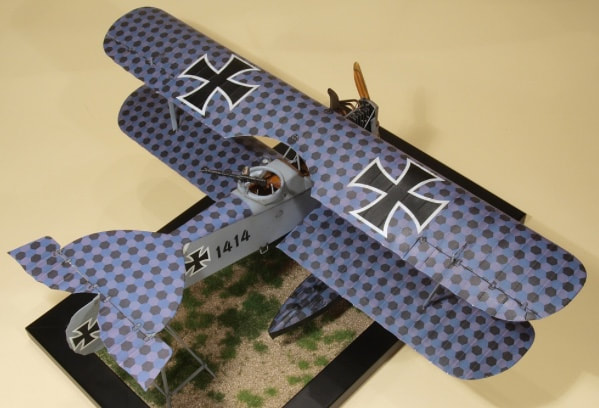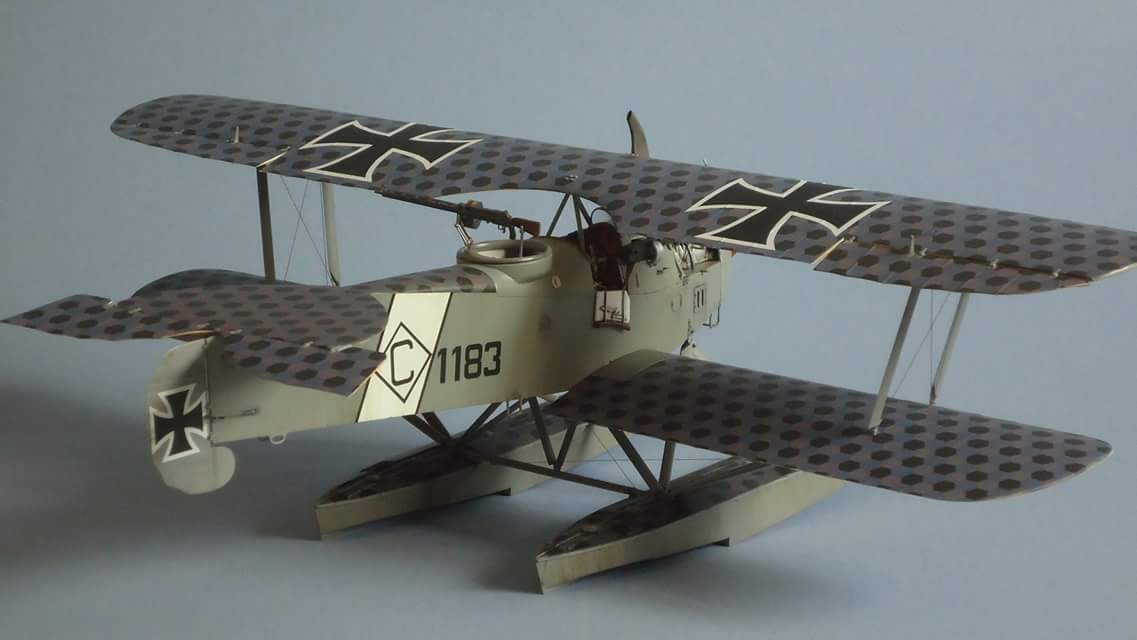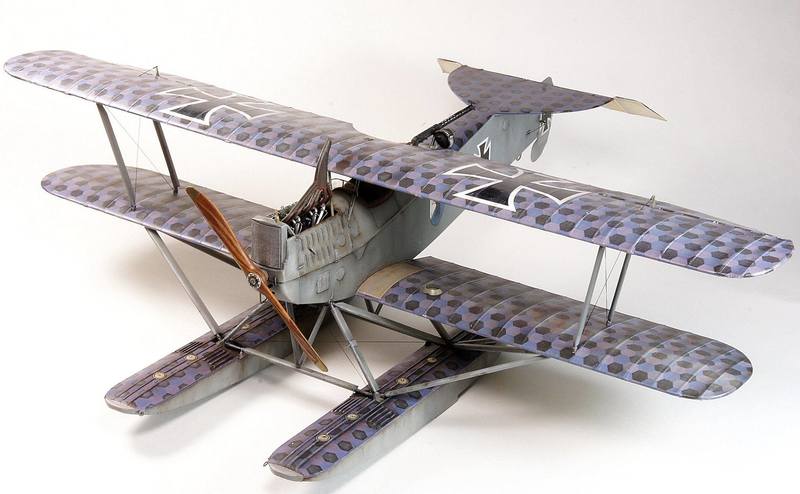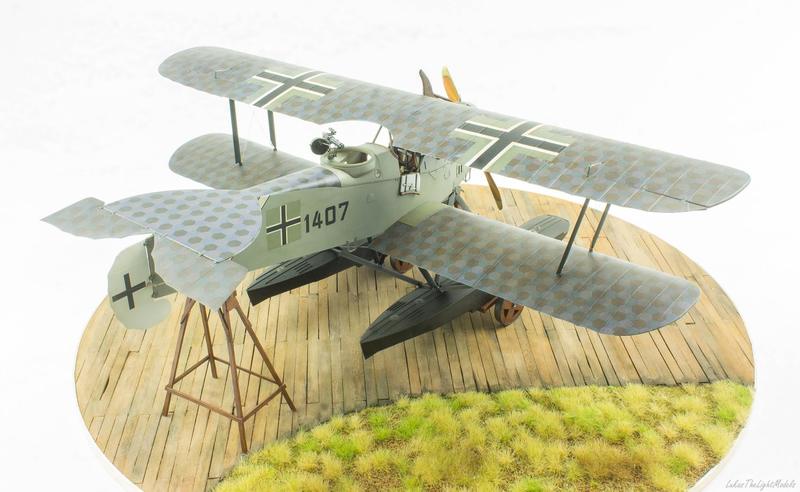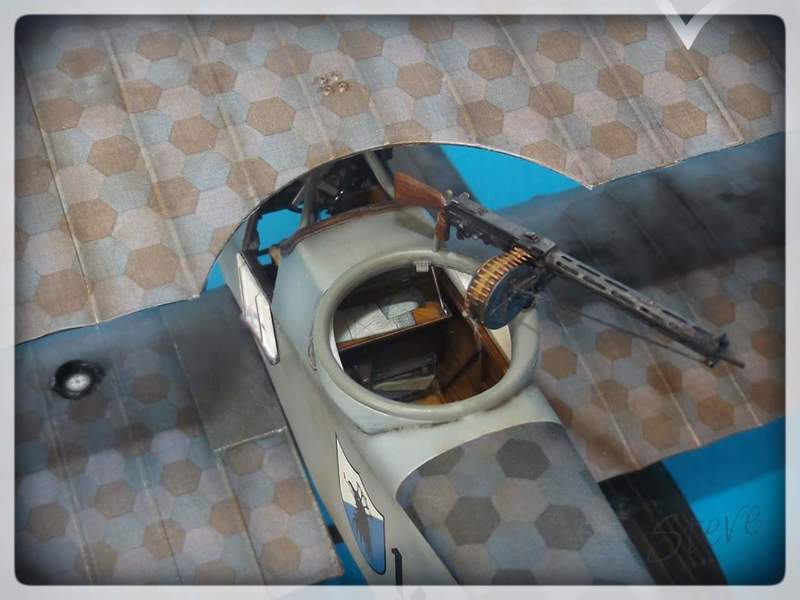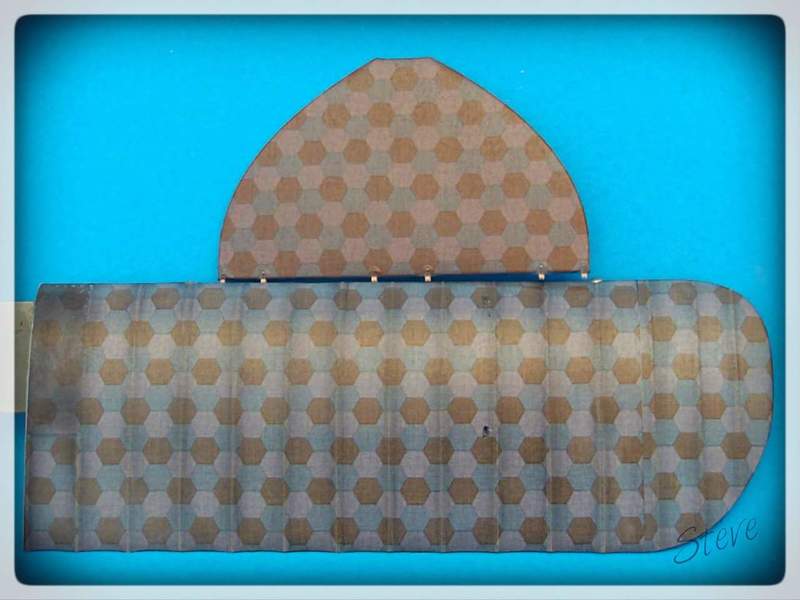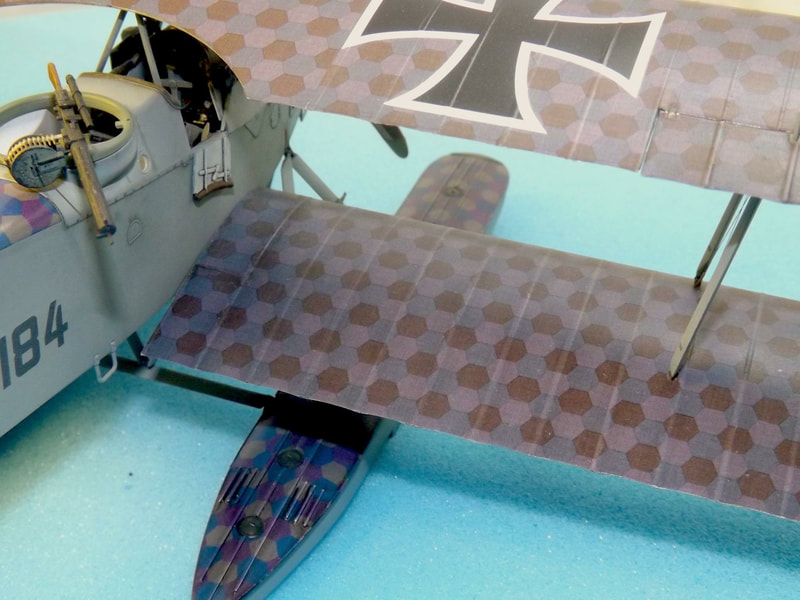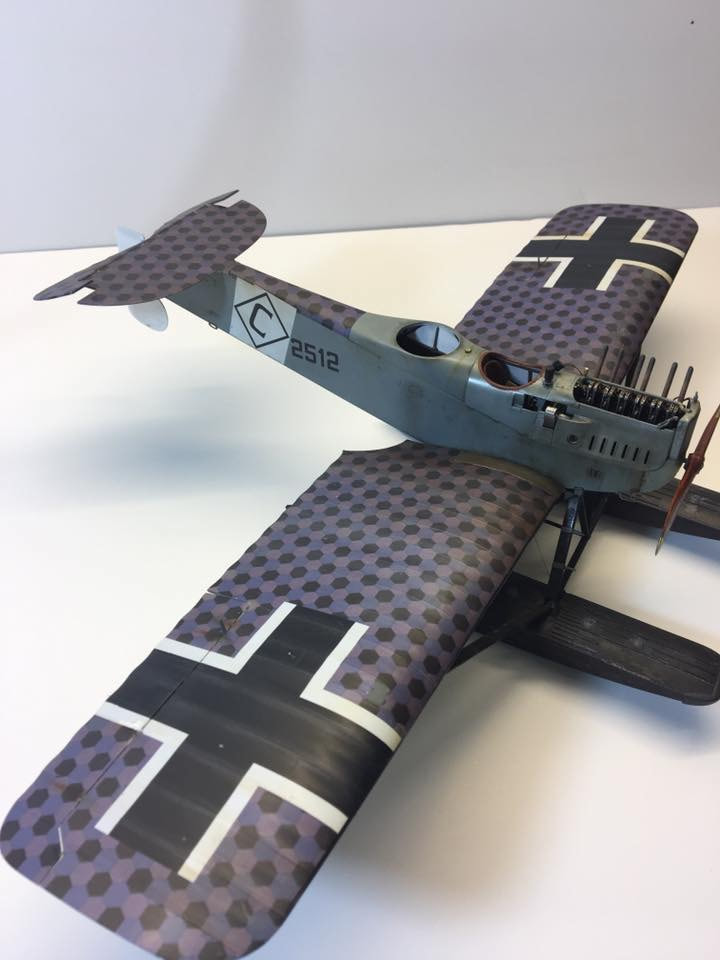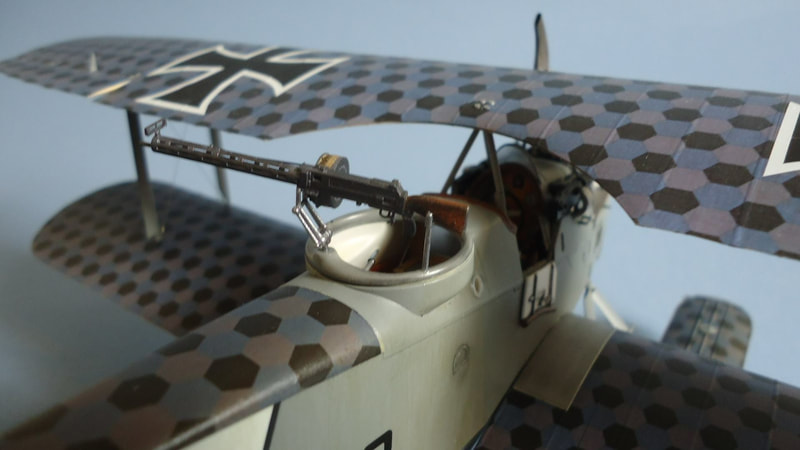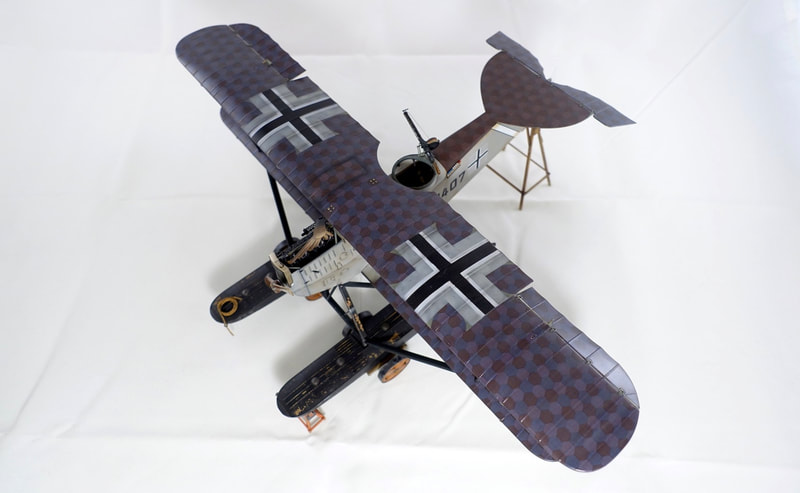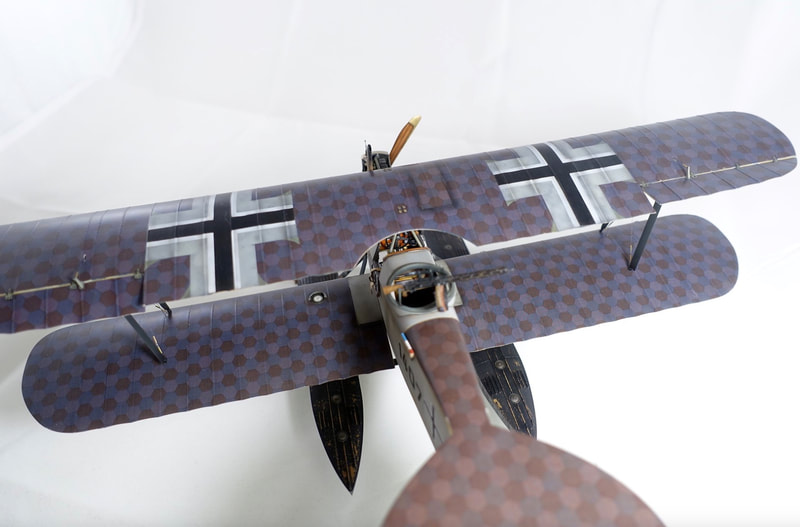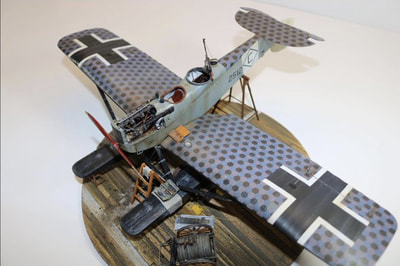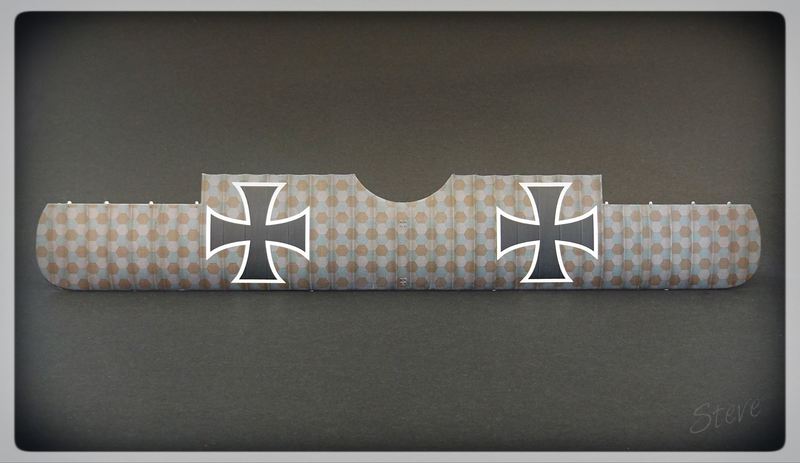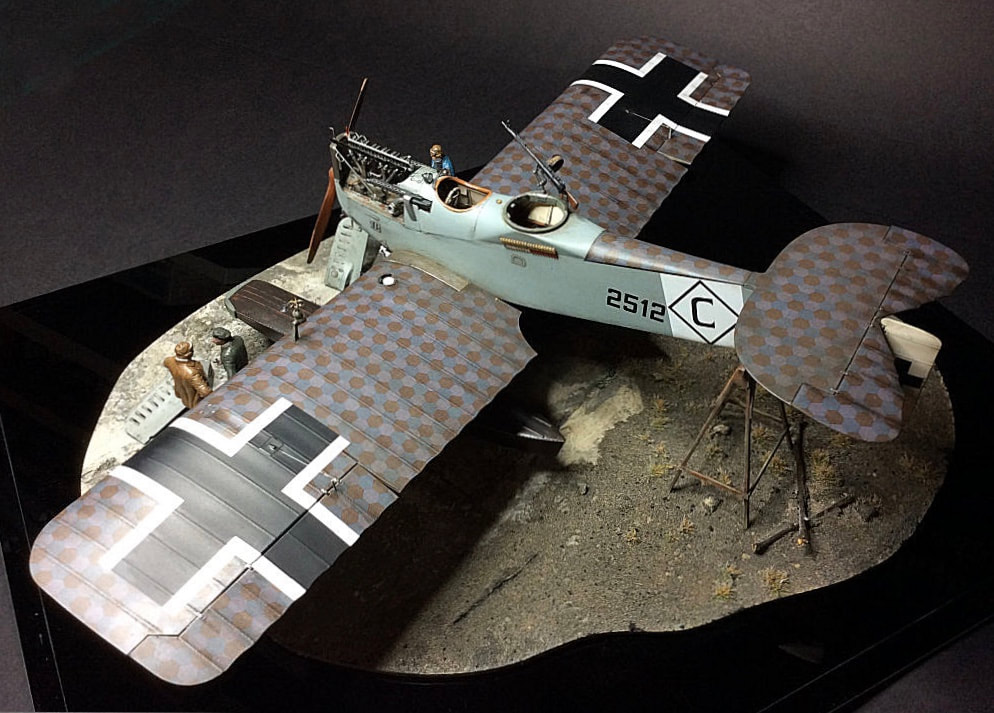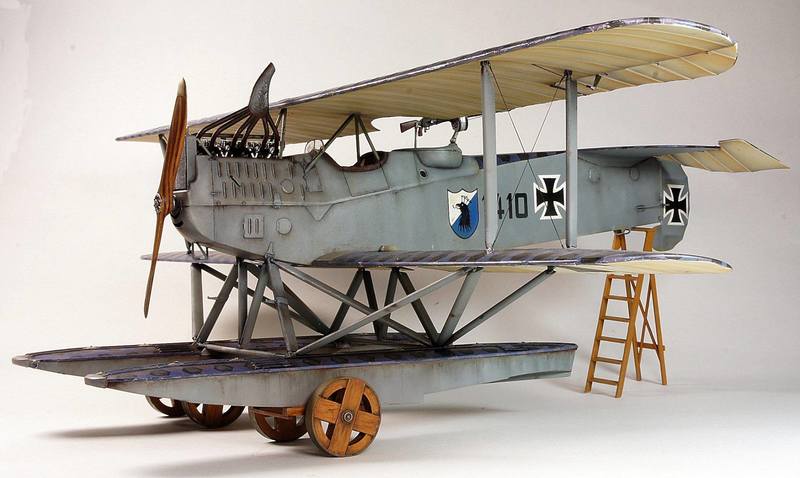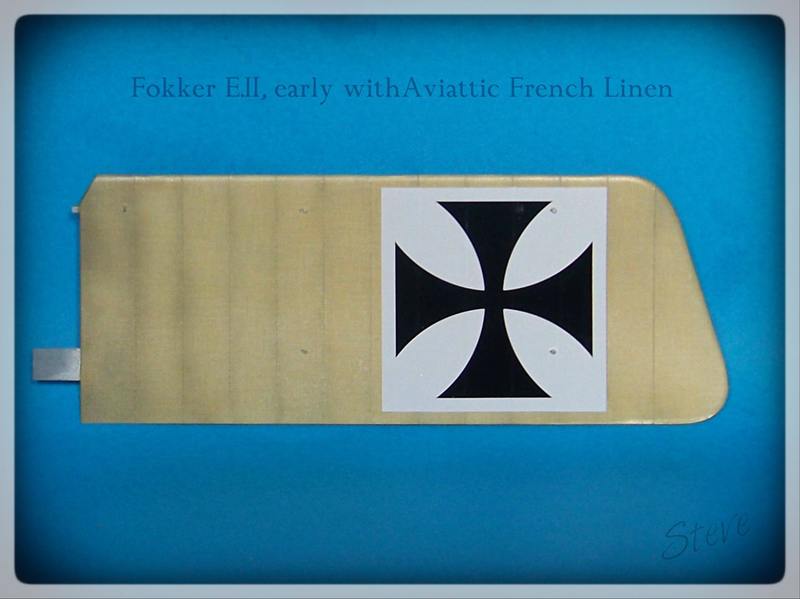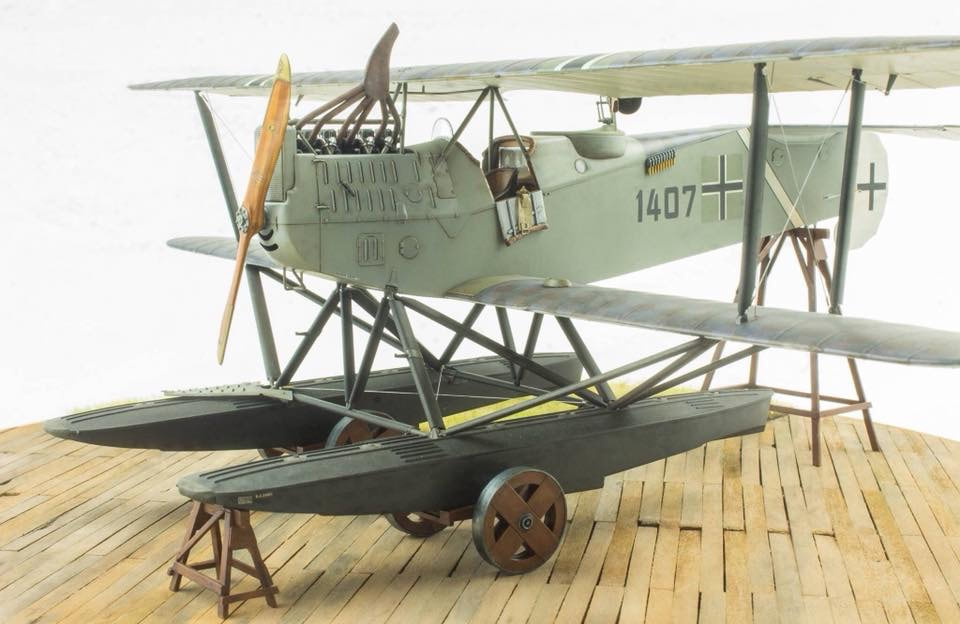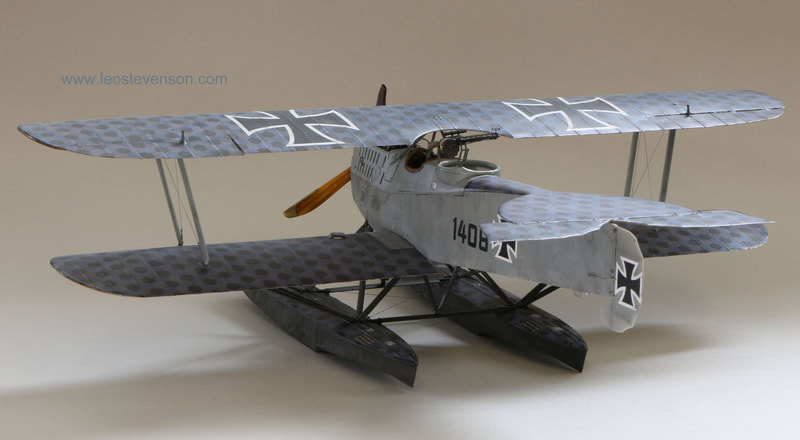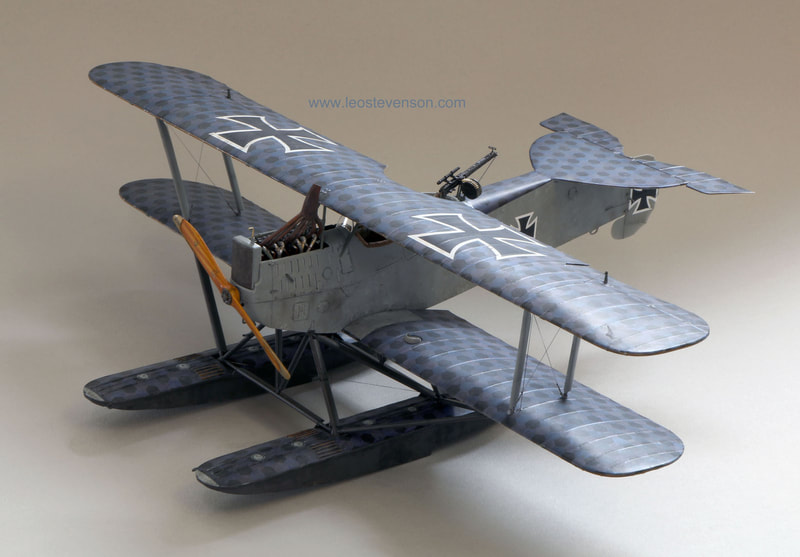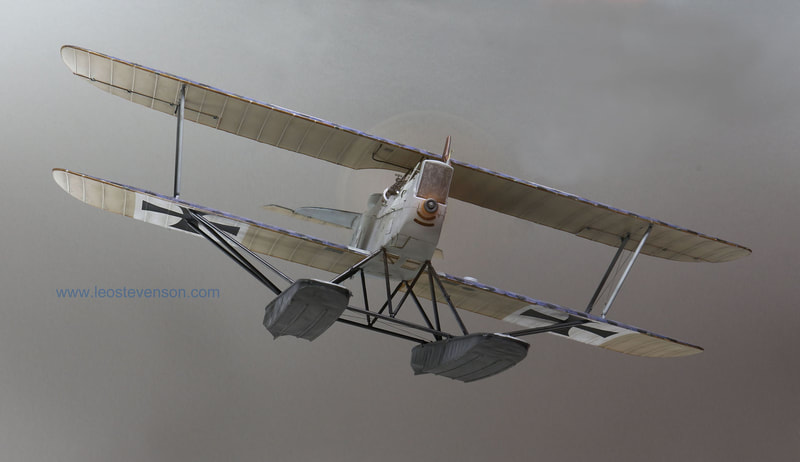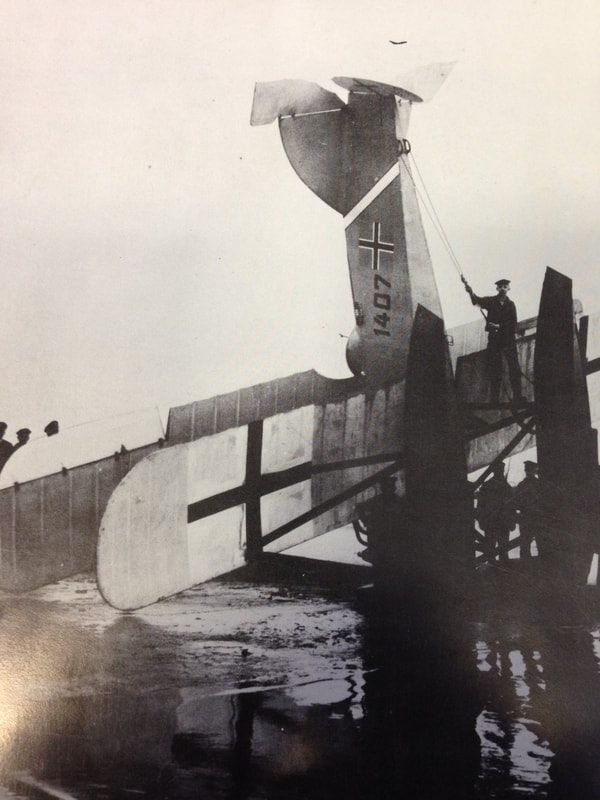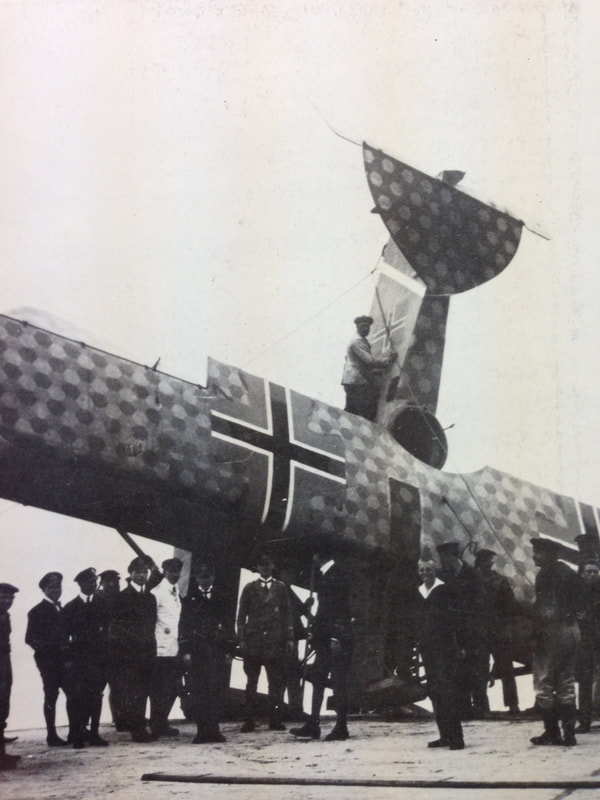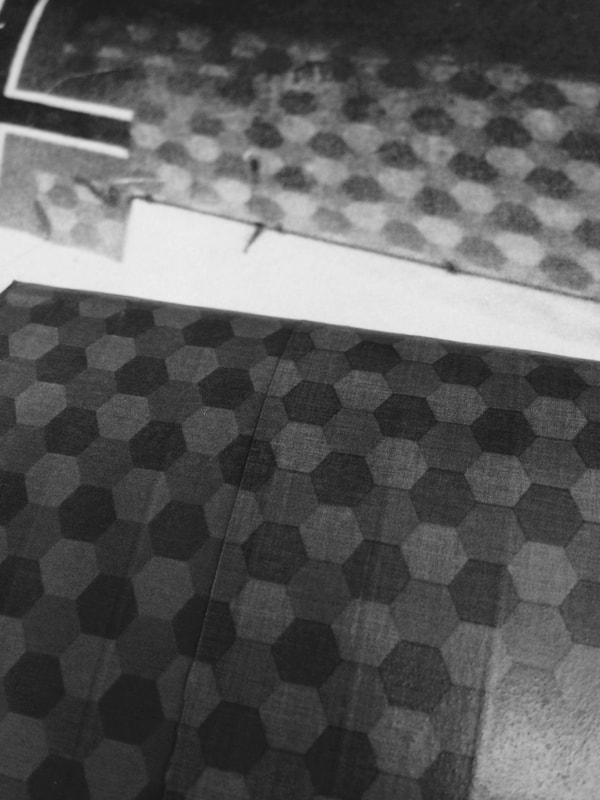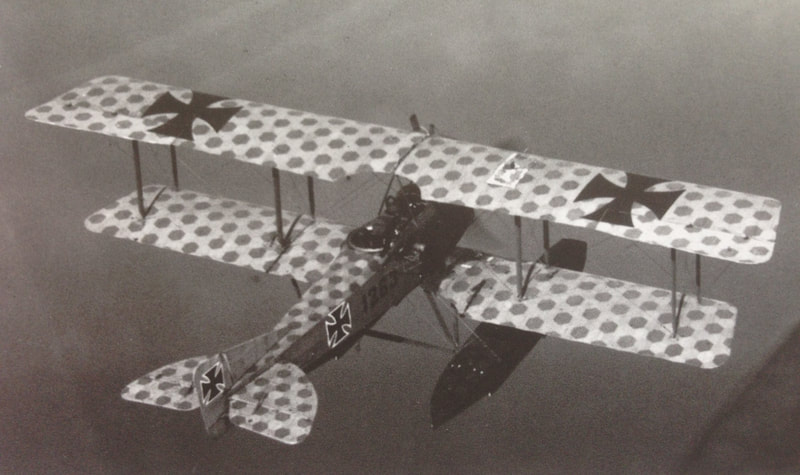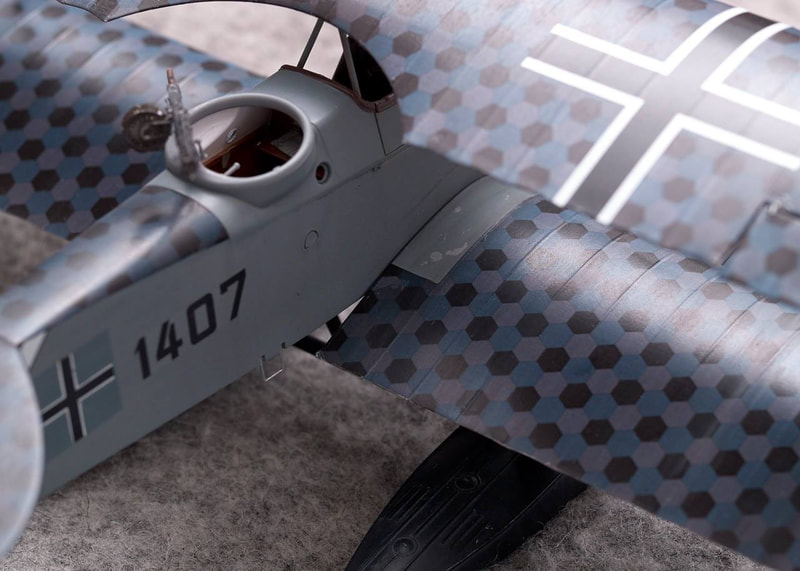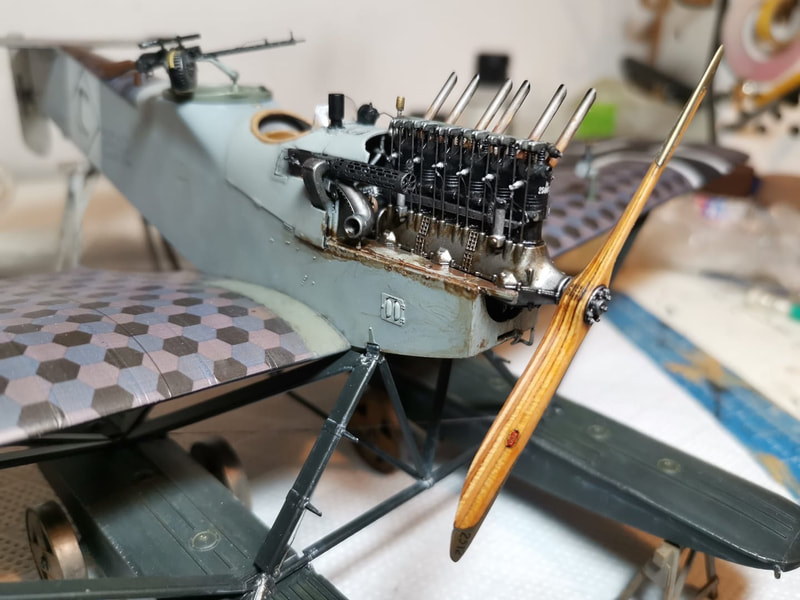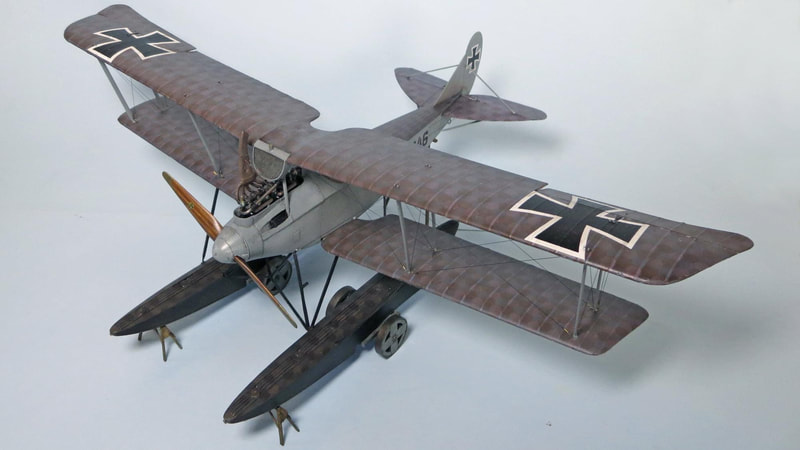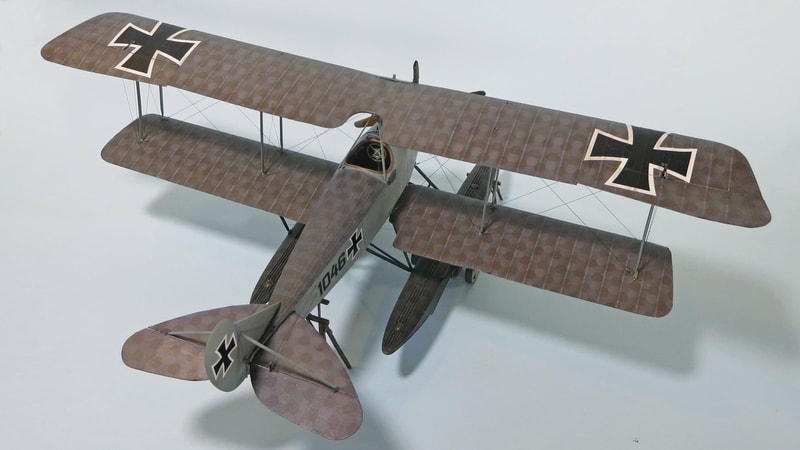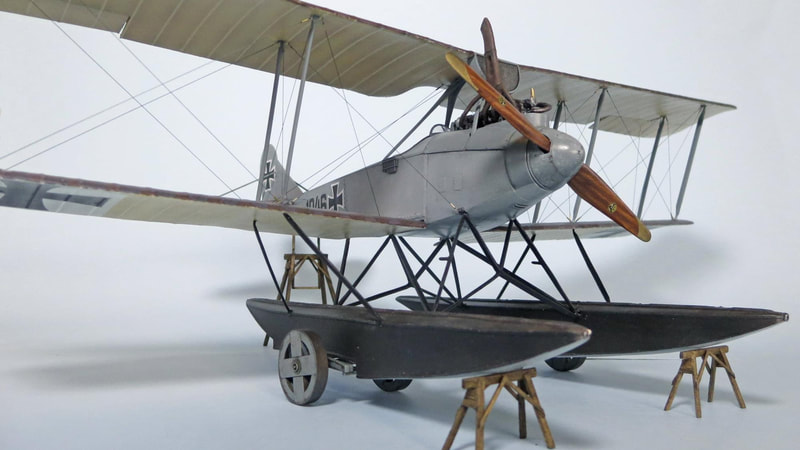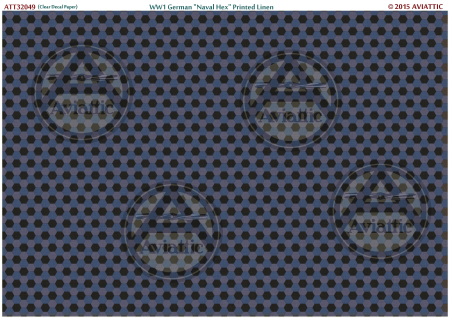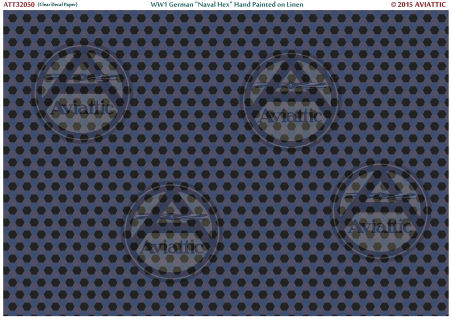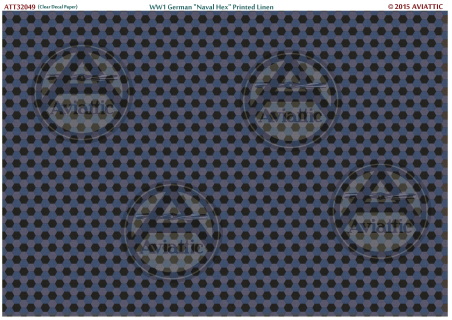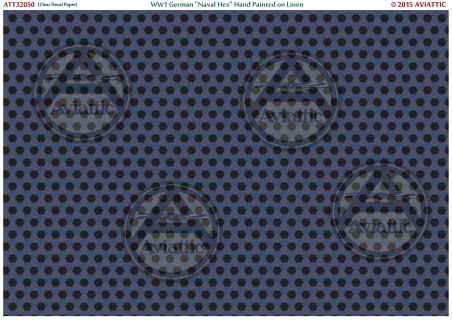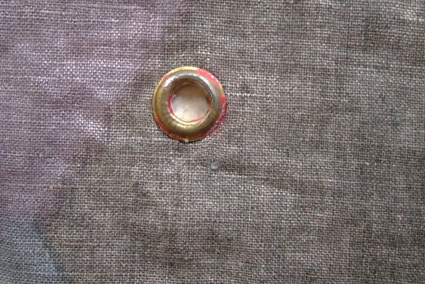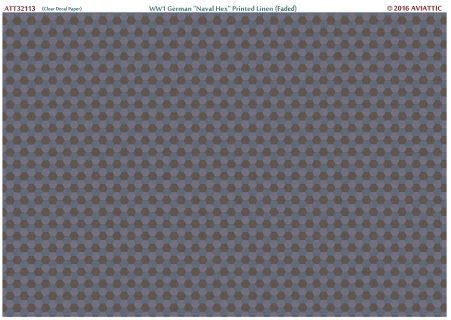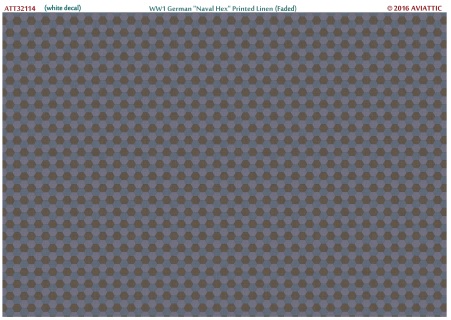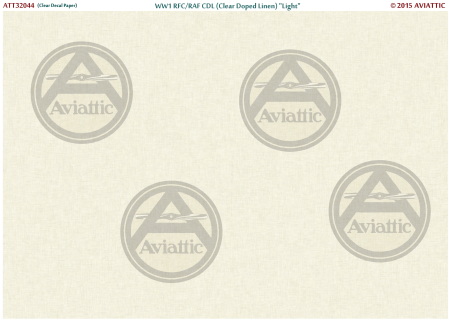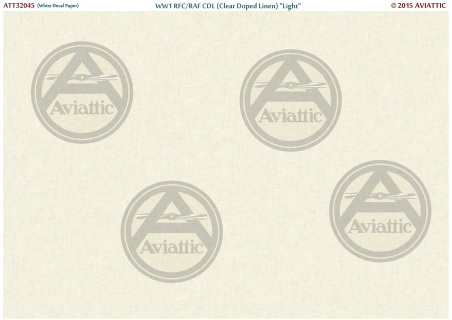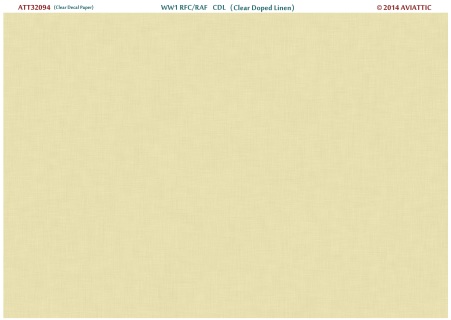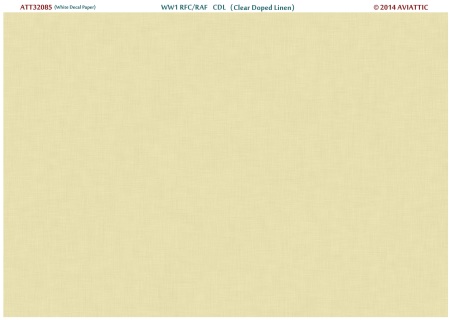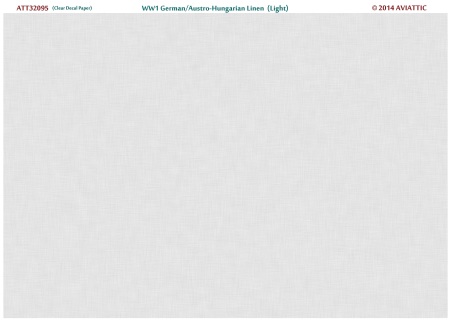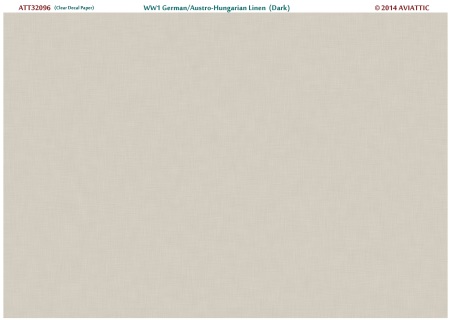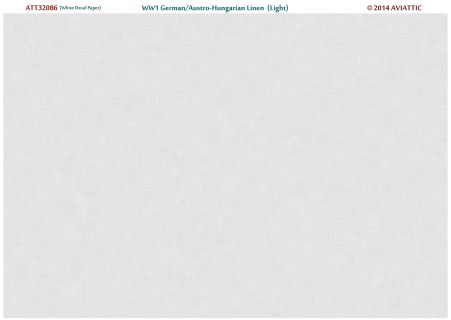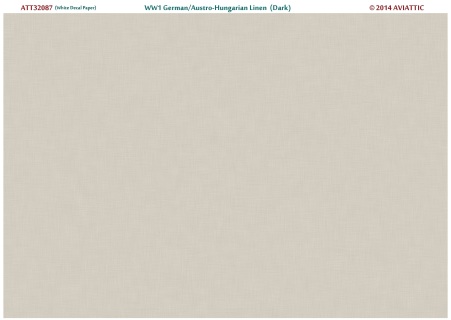Wingnut Wings Hansa Brandenberg W12 using Aviattic "faded" Naval hex decals. Model by Leo Stevenson.
"..grey brown, grey blue, grey violet.."
That was the original official WW1 Idflieg directive and we've followed it!
Confirmed by Ray Rimell to be a perfect match for a preserved sample shared with him and photographed by the great Peter Grosz. In the absence of any available source material Harry and I used our intuition and experience studying fabrics with typical dye colours and effects to judge these colours - Ray's endorsement was very gratifying.
A pleasing "English Channel" palette is the result - not a sign of pink, or "black" as WNW would suggest in their description of the Aviattic decals adorning models on their gallery pages. Internet photographic reproduction can be deceptive and certain individuals have their own reasons for such comments and undermining other companies efforts..
like their "lozenge" decal attempts, the Wingnut Wings pink and baby blue decals included in the kit bear no resemblance to any known study or existing artefact and are the result simply of the printing process not achieving the desired results and commerce not allowing further experimentation, I'm sure.
An absence of rib-tapes have been observed on many Naval German and Austro-Hungarian aircraft. Because of the effects of sea and moisture the glue that attached them (they were not stitched on) would have perished virtually straight away and they would have been lost.
Great trouble was taken, unlike with the 4 and 5 colour Tarnstoff, to match one bolt pattern against the next and this was simply stitched to the wrappings of the rib stations.
Available in painted (early machines were hand painted onto linen and plywood) or printed linen effect. "Faded" offered for well-weathered machines!
"Clear" (translucent) decal paper for pre-shading or choose "white" (solid) backed for post-shading effects.
Photos suggest that printed linen was doped onto ply covered areas such as the turtle-deck and horizontal stabiliser. This would account for the change of tone of the hexagons on these areas in some photos (that WNW have depicted as a totally fanciful alternative colour way). Use gloss cream or pale grey/cream, as opposed to white for flying surfaces, on these areas underneath your Aviattic decals to simulate this effect perfectly!
Choose from the Aviattic linen range for the undersurface covering.
No naval examples of varnished linen have yet been studied so, taking the sea-going conditions and weathering of the airframe into account, take your pick and experiment with different techniques. Rib-tapes are in evidence in some photos of up-turned aircraft - these should be replicated using the "white decal" options, which are not translucent and give a pleasing contrast.
Printing colours can vary slightly between printing batches. "Clear decal" and "white decal" prints are deliberately different in appearance for fractional contrast.
ATT32049 (Clear Decal Paper) WW1 German "Naval Hex" Printed Linen
Following the official 1916 directive for German naval aircraft - three hexagons of "grey blue, grey brown, grey violet" - we have achieved a balance of those three colours resulting in a satisfyingly "English Channel" palette for both painted and later printed linen effects.
For early pre-1917 machines use painted, for later use all printed linen (use a cream undercoat for "solid" surfaces) or possibly linen flying surfaces and painted plywood.
Both combinations give that "2 tone" effect often seen in photos...
For early pre-1917 machines use painted, for later use all printed linen (use a cream undercoat for "solid" surfaces) or possibly linen flying surfaces and painted plywood.
Both combinations give that "2 tone" effect often seen in photos...
ATT32050 (Clear Decal Paper) WW1 German "Naval Hex" Hand Painted on Linen effect
Following the official 1916 directive for German naval aircraft - three hexagons of "grey blue, grey brown, grey violet" - we have achieved a balance of those three colours resulting in a satisfyingly "English Channel" palette for both painted and later printed linen effects.
For early pre-1917 machines use painted, for later use all linen (use a cream undercoat for "solid" surfaces) or possibly linen flying surfaces and painted plywood.
Both combinations give that "2 tone" effect often seen in photos...
For early pre-1917 machines use painted, for later use all linen (use a cream undercoat for "solid" surfaces) or possibly linen flying surfaces and painted plywood.
Both combinations give that "2 tone" effect often seen in photos...
ATT32051 (Clear Decal Paper) WW1 German "Naval Hex" Printed Linen
Following the official 1916 directive for German naval aircraft - three hexagons of "grey blue, grey brown, grey violet" - we have achieved a balance of those three colours resulting in a satisfyingly "English Channel" palette for both painted and later printed linen effects.
For early pre-1917 machines use painted, for later use all printed linen (use a cream undercoat for "solid" surfaces) or possibly linen flying surfaces and painted plywood.
Both combinations give that "2 tone" effect often seen in photos...
For early pre-1917 machines use painted, for later use all printed linen (use a cream undercoat for "solid" surfaces) or possibly linen flying surfaces and painted plywood.
Both combinations give that "2 tone" effect often seen in photos...
ATT32052 (White Decal Paper) WW1 German "Naval Hex" Hand Painted on Linen effect
Following the official 1916 directive for German naval aircraft - three hexagons of "grey blue, grey brown, grey violet" - we have achieved a balance of those three colours resulting in a satisfyingly "English Channel" palette for both painted and later printed linen effects.
For early pre-1917 machines use painted, for later use all printed linen (use a cream undercoat for "solid" surfaces) or possibly linen flying surfaces and painted plywood.
Both combinations give that "2 tone" effect often seen in photos...
For early pre-1917 machines use painted, for later use all printed linen (use a cream undercoat for "solid" surfaces) or possibly linen flying surfaces and painted plywood.
Both combinations give that "2 tone" effect often seen in photos...
Did the colours fade whilst in service? Or merely the dope and varnish perish and bloom to give a paler effect?...
Original linen sample preserved beneath later red primer and aluminium dope on one of the Paul Strahle Halberstadts.
Thanks to Manfred Thiemeier for allowing its use here.
It is not known why or when this (surplus?) linen may have been applied in such an unusual fashion, probably during their rebuilding for use as passenger aircraft in the 1920's...
Brass "grommet" is a drain hole, present on wing coverings to allow moisture to escape and preserve the airframe a little longer, a detail rarely noted on models.
Naval hex on a Halberstadt CIV? Don't you just love WW1 aviation mysteries?!...
Thanks to Manfred Thiemeier for allowing its use here.
It is not known why or when this (surplus?) linen may have been applied in such an unusual fashion, probably during their rebuilding for use as passenger aircraft in the 1920's...
Brass "grommet" is a drain hole, present on wing coverings to allow moisture to escape and preserve the airframe a little longer, a detail rarely noted on models.
Naval hex on a Halberstadt CIV? Don't you just love WW1 aviation mysteries?!...
ATT32113 (Clear Decal Paper) WW1 German "Naval Hex" Printed Linen "Faded"
Following the official 1916 directive for German naval aircraft - three hexagons of "grey blue, grey brown, grey violet" - we have achieved a balance of those three colours resulting in a satisfyingly "English Channel" palette.
Though dyes did not fade quickly the protective varnish coverings perished and "bloomed" creating faded effects - some seaplanes saw service beyond the Great War...
Though dyes did not fade quickly the protective varnish coverings perished and "bloomed" creating faded effects - some seaplanes saw service beyond the Great War...
ATT32114 (White Decal Paper) WW1 German "Naval Hex" Printed Linen "Faded"
Following the official 1916 directive for German naval aircraft - three hexagons of "grey blue, grey brown, grey violet" - we have achieved a balance of those three colours resulting in a satisfyingly "English Channel" palette.
ATT32044 (Clear Decal Paper) WW1 CDL (Clear Doped Linen) "bleached"
ATT32045 (White Decal Paper) WW1 CDL (Clear Doped Linen) "bleached"
Cut into strips for "solid" contrasting rib tapes against linen decals of your choice
